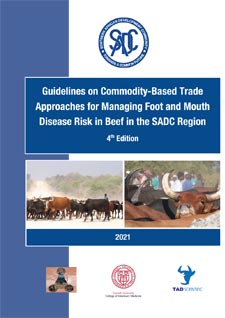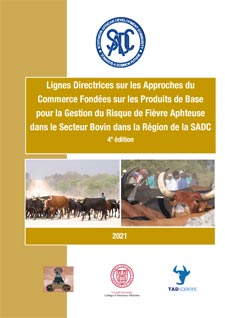2022 (No. 2)
AHEAD Update
Dear AHEAD Colleagues,
Welcome to the latest issue of the AHEAD Update. As always, if you would like to post an item in the next Update, please just send it to us – thanks.
Mini-Torial
Commodity-Based Trade of Beef is Only One Side of the Resilience Coin
Those of you who read the AHEAD Update know that our work is focused on reconciling land-use conflicts at the livestock-wildlife interface in southern Africa and, more specifically, on supporting the success of transfrontier conservation areas such as the Kavango Zambezi (KAZA). As highlighted in this issue of the AHEAD Update, we are very pleased that decades of work to find innovative ways for livestock farmers living close to wildlife like buffalo to be able to trade their beef in international markets have clearly started to pay-off. Commodity-based trade (CBT) has been officially endorsed by SADC, and farmers in places deemed foot and mouth disease (FMD) 'red zones' due to the presence of wildlife are starting to take advantage of what CBT offers after having been shut out of beef markets literally for generations.
But the collaborative energy put into making CBT a reality over many years of effort by colleagues across the region and beyond was generated and sustained by genuine excitement over the multiple problems it could solve – including but not limited to improving poor farmers’ access to beef markets. With less dependence on fences to mitigate risks of FMD (because CBT focuses on how beef can be safely produced along value chains rather than worrying about whether any buffalo are in the neighborhood), communities in places like northern Botswana or Namibia’s Zambezi Region are on the verge of having new opportunities to expand their participation in wildlife economies. Specifically, if CBT has indeed created an enabling environment to revisit veterinary fencing policy (and we believe it has), then ecologically meaningful transfrontier conservation in a landscape like KAZA can finally become a reality. In short, with the advent of CBT, we may actually be able to reopen wildlife corridors to allow for migrations that had been the norm for millennia, long before veterinary fencing began blocking them starting in the late 1950s. Restoration reinforcing system resilience.
But today, we confess that we fear we may be seeing the promise of truly integrative and sustainable land-use planning evaporating before our eyes. As we have written previously, "six wildlife dispersal areas, or habitat corridors, have been identified as critical to securing a long-term future for KAZA’s iconic wilderness and species. However the most important of these corridors, including those that connect Ngamiland to other key parts of KAZA, remain compromised by fences, many of which were put in place decades ago to control animal disease but no longer necessarily serve their original purpose.”
We must now use science-based risk assessments to see whether some fences are, today, doing more economic, ecological and social harm than good. We owe it to future generations to answer this question now, before it is too late for KAZA to truly become the resilient source of poverty alleviation and biodiversity conservation it was originally meant to be when the KAZA Treaty was signed by five Heads of State more than ten years ago.
Featured New Resource
SADC, AHEAD (2021) Guidelines on Commodity-Based Trade Approaches for Managing Foot and Mouth Disease Risk in Beef in the SADC Region. 4th Edn.
The AHEAD Guidelines on CBT are now an official SADC document, as requested by the SADC Council of Ministers of Agriculture, Food Security, and Fisheries. The document is available in English, French and Portuguese.
Like its previous editions, this document demonstrates that export of beef from SADC countries or zones not recognised as free from FMD is possible, especially to regional markets (because the sanitary circumstances that prevail in the southern Africa region are common to many countries). Furthermore, several alternative approaches, under the umbrella term commodity-based trade, are potentially possible, and this guide outlines those that comply with international trade standards as well as their respective advantages, disadvantages and requirements.
More New Resources

UNAI (2022) The ‘Beef’ with Foot and Mouth Disease: Academia Helps Farmers Balance Production and Conservation.
United Nations
Commodity-Based Trade (CBT) of beef is all about making land-use decisions that will be socially, ecologically and economically sustainable for generations to come – but this will not happen without the livestock and wildlife sectors pulling in the same direction.

Bartlett H, et al. (2022) Understanding the Relative Risks of Zoonosis Emergence Under Contrasting Approaches to Meeting Livestock Product Demand.
Royal Society Open Science
Researchers evaluate the evidence that intensive livestock production is contributing to pandemics, and conclude that data is currently insufficient to determine whether lower or higher yielding systems would better limit the risk of future pandemics.
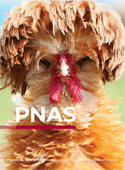
Dwyer R, et al. (2022) Epidemiology of Mycobacterium bovis Infection in Free-Ranging Rhinoceros in Kruger National Park, South Africa.
PNAS
This work provides a foundation for understanding the spread of bovine tuberculosis in a complex ecosystem that includes susceptible threatened and endangered species.
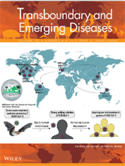
Banda F, et al. (2022) The First Detection of a Serotype O Foot-and-Mouth Disease Virus in Namibia.
Transboundary and Emerging Diseases
Findings highlight an expanding FMD threat for southern Africa, and point to the need for enhanced monitoring since serotype O vaccines are not widely used in Namibia, nor in neighboring countries.
Upcoming Meetings

SADC TFCAs Network Meeting
Hybrid event 26-28 Sep 2022, Pretoria, South Africa
This year’s annual meeting will be a hybrid event and is open to network members from across the SADC region and beyond. Topics include updates on new transboundary initiatives, cross-cutting projects, and regional funding programs.

Planetary Health Annual Meeting (PHAM)
Hybrid event 31 Oct-2 Nov 2022, Boston, USA
The 5th PHAM will be a fully hybrid event, based in-person at the Harvard Medical School Campus, and online. Programming is centered around the theme "Building the Field and Growing the Movement."
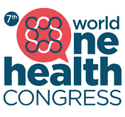
World One Health Congress (WOHC)
Hybrid event 7-11 Nov 2022, Singapore
The 7th WOHC will be a hybrid event catering to in-person and online attendees, with programming centered around the theme “Integrating Science, Policy and Clinical Practice: A One Health Imperative Post-COVID-19.”
Again, if you have items for the next AHEAD Update, please just let us know – thanks.
Yours in One Health,
Steve & Shirley
Steve Osofsky, DVM
Cornell University, College of Veterinary Medicine
Jay Hyman Professor of Wildlife Health & Health Policy
AHEAD Program Coordinator
s.osofsky@cornell.edu
Shirley Atkinson, MSc
Cornell University, College of Veterinary Medicine
Assistant Director, Wildlife Health & Health Policy
AHEAD Regional Coordinator
s.atkinson@cornell.edu
What is AHEAD?
AHEAD works to create enabling environments that allow different and often competing sectors to literally come to the same table and find collaborative ways forward to address challenges at the interface of wildlife health, livestock health, and human health and livelihoods. We convene stakeholders and provide technical support and resources for projects locally identified as priorities. AHEAD, one of the first applied One Health programs, recognizes the need to look at health, disease, and the environment together, while always taking a given region's socioeconomic, political, and policy context into account.
